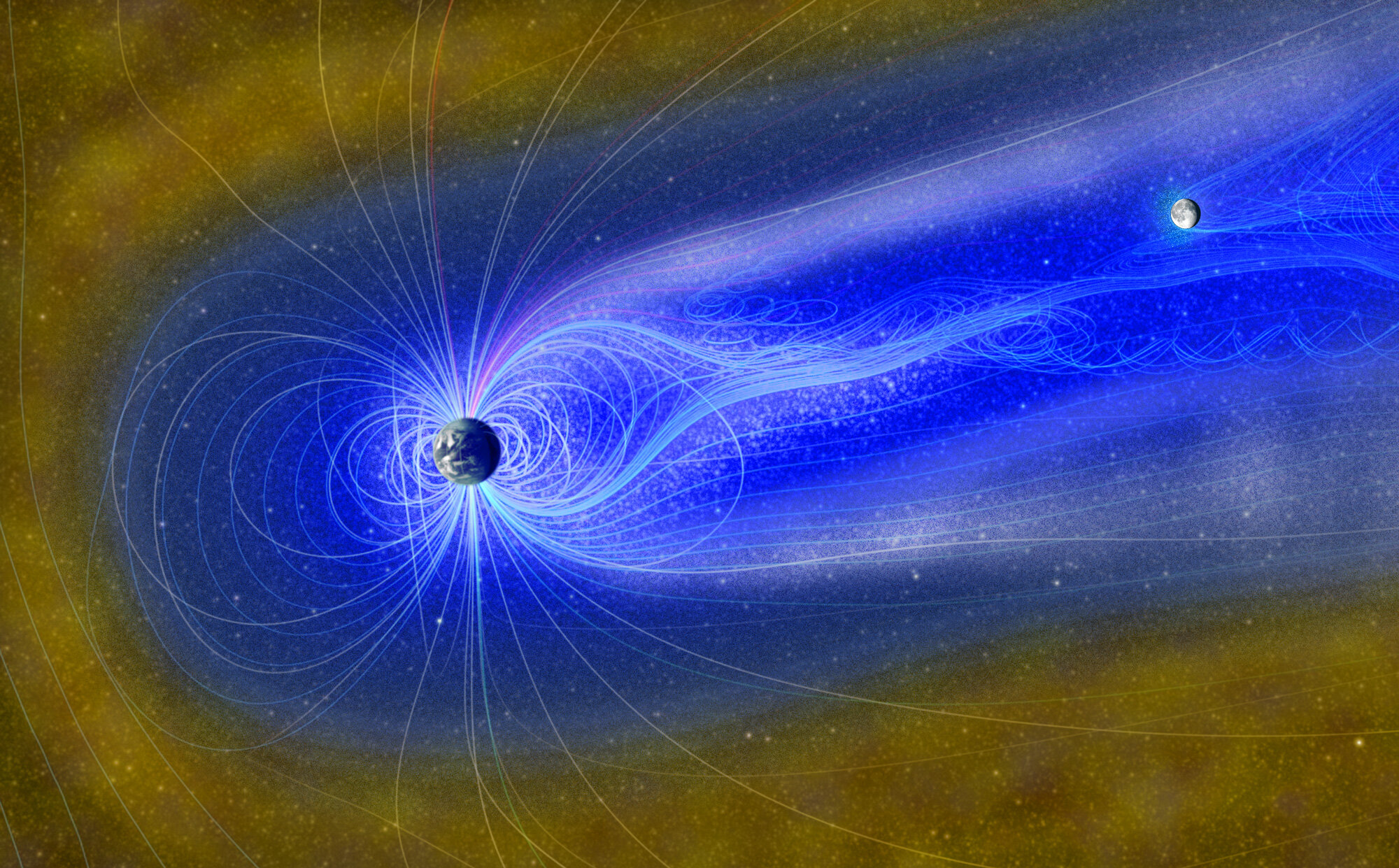 75% of its orbit in the solar wind (yellow) which is blocked by the magnetosphere for the rest of the time. Credit: E. Masongsong, UCLA EPSS, NASA GSFC SVS.” width =”800″ height =”496″/>
75% of its orbit in the solar wind (yellow) which is blocked by the magnetosphere for the rest of the time. Credit: E. Masongsong, UCLA EPSS, NASA GSFC SVS.” width =”800″ height =”496″/>Before the Apollo era, it was thought that the moon would be dry as a desert due to the extreme temperatures and harsh environment. Numerous studies have since discovered lunar water: ice in shady polar craters, water bound in volcanic rocks and unexpected rusty iron deposits in the lunar soil. Despite these findings, there is still no true confirmation of the extent or origin of lunar surface water.
The prevailing theory is that positively charged hydrogen ions driven by the solar wind bombard the lunar surface and react spontaneously to make water (such as hydroxyl (OH)).–) and molecular (H2O)). A new multinational study, however, in Astrophysical Journal Letters suggests that solar wind may not be the only source of water-forming ions. The researchers show that particles from the earth can also sow the moon with water, suggesting that other planets may also contribute water to their satellites.
Water is much more abundant in space than astronomers first thought, from the surface of Mars to Jupiter’s moons and Saturn’s rings, comets, asteroids and Pluto; it has even been detected in clouds far beyond our solar system. It was previously assumed that water was absorbed into these objects during the formation of the solar system, but there is increasing evidence that water in space is much more dynamic. Although the solar wind is a likely source of lunar surface water, computer models predict that up to half of it will evaporate and disappear in high-latitude regions during the approximately three days of the full moon when it enters the Earth’s magnetosphere.
Surprisingly, the latest analysis of surface hydroxyl / water surface maps by the Chandrayaan 1 satellite’s Moon Mineralogy Mapper (M3) has shown that lunar surface water does not disappear during this shielding period for magnetosphere. It is believed that the earth’s magnetic field would impede the solar wind to reach the moon so that water could not regenerate faster than it is lost, but the researchers found that this was not the case.
By comparing a time series of water surface maps before, during and after the passage of magnetospheres, the researchers argue that lunar water can be supplemented by the flow of magnetospheric ions, also known as “Earth wind.” The presence of these Earth-derived ions near the moon was confirmed by the Kaguya satellite, while THEMIS-ARTEMIS satellite observations were used to compare the characteristic properties of ions in the solar wind with those within the Earth’s magnetosphere.
Previous Kaguya satellite observations during the full moon detected high concentrations of oxygen isotopes that leaked from the earth’s ozone layer and were embedded in lunar soil, along with an abundance of hydrogen ions in the vast expansive atmosphere of our planet known as the exosphere. These combined currents of magnetosphere particles are fundamentally different from those in the solar wind. The latest detection of surface water in this study refutes the shielding hypothesis and rather suggests that the magnetosphere itself is a “water bridge” which can complement the moon.
The study used a multidisciplinary team of experts from cosmochemistry, space physics and planetary geology to contextualize the data. Previous interpretations of surface water did not take into account the effects of earth ions and did not investigate how surface water changed over time. The only surface maps and particle data available during a full moon in the magnetosphere were in winter and summer 2009, and it took the past few years to analyze and interpret the results. The analysis was particularly difficult due to the rare observations, which were necessary to compare the same lunar surface conditions over time and to control temperature and composition of the surface.
In light of these findings, future studies of solar wind and planetary winds may reveal more about the evolution of water in our solar system and the potential effects of solar and magnetosphere activity on other moons and planetary bodies. To expand this investigation, new satellites equipped with comprehensive hydroxyl / water map spectrometers and particle sensors in orbit and on the lunar surface will be needed to fully confirm this mechanism. These tools can help predict the best regions for future exploration, mining, and eventual settlement on the moon. In practice, this research could influence the design of upcoming space emissions to better protect humans and satellites from the dangers of particle radiation, and could also improve computer models and laboratory experiments of water formation in space.
Water on the moon: research reveals the kind and abundance that exploration plans promote
Earth wind as a possible source of lunar surface hydration. arxiv.org/abs/1903.04095
Provided by UCLA Earth, Planetary, and Space Sciences
Quotation: First proof that water on the lunar surface can be created by the Earth’s magnetosphere (2021, 28 January), obtained on 28 January 2021 from https://phys.org/news/2021-01-evidence-lunar-surface-earth -magnetosphere. html
This document is subject to copyright. Except for any fair trade for the purpose of private study or research, no portion may be reproduced without the written permission. The content is provided for informational purposes only.
